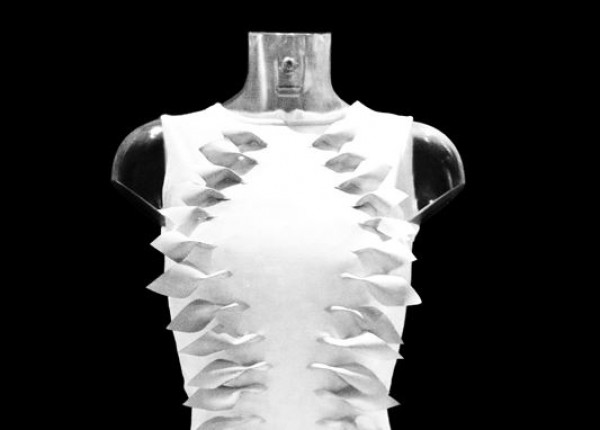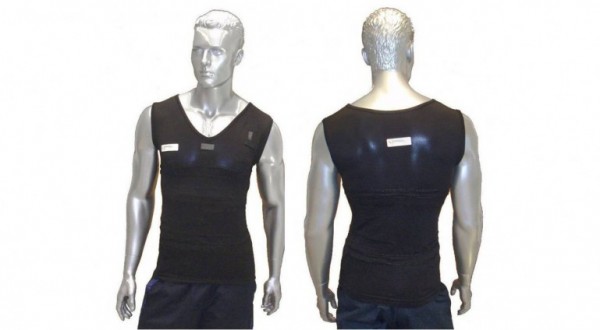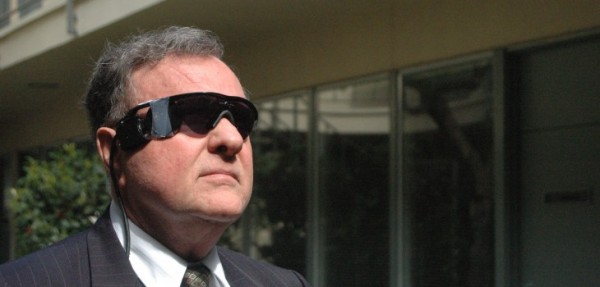I have a love hate relationship with clothes. Just to be clear, I’m not against the wearing of them, just the buying of them. Since I’ve never been very good at making my own clothes, the task of remaining politely covered has required shopping. With limited liquid assets at my disposal, I’ve always been able to think of at least 10 things I’d rather buy than brand new clothes, and so my wardrobe is mostly an eclectic mix of hand-me-downs, thrift store scores, and clearance rack discoveries.
Recently, however, I’ve been stumbling across some interesting examples of clothes that are more than just expensive ways to cover our nakedness. With the rapid advancement of mobile, flexible, and even plant-based technologies, clothing has become yet another medium upon which to explore the limits both of science and fashion.
Wearable technology has really started to come into its own, with fashion designers and engineers collaborating to imagine where their fields might overlap in the not-so-distant future. While the idea of energy-generating shoes and gloves embedded with LED turn signals might sound far-fetched, the reality is that wearable technologies are already helping to make our world a cleaner, healthier place.
Below are three examples of technologically-enhanced garments that in the future could help to improve the health of the wearer. In some cases, they can even make it possible for those with what are now perceived as physical disabilities to live completely independent lives. If you’ve seen or read about a cool wearable technology, be sure to share it with us in the comments!
1. FLUTTER dress for the hearing impaired

For those who are partially or fully deaf, independent living can be a challenge. Hearing aids, lip reading and sign language ensure that hearing impaired are able to communicate with those around them, but being unable to hear environmental sounds can be dangerous. Finding a way to alert hearing impaired individuals to warning sounds in their surroundings would enable them to safely venture out into the world without constant supervision.
Flutter is a perfect example of the way textiles and robotics can be combined to improve the quality of life for disabled individuals. Created by Halley Profita, Nicholas Farrow, and Professor Nikolaus Correll at the University of Colorado at Boulder, the Flutter dress gives vibrotactile feedback in the direction of a loud sound or alarm to help those with hearing loss respond more intuitively to their external environment. The team also says that development of this wearable technology would also cut down on e-waste created by discarded hearing devices.
2. T-shirt that monitors chronically ill patients

Those being treated for or recovering from chronic illness present a particular challenge for healthcare professionals. Many of these patients would stay in the comfort of their own homes rather than a hospital room. But because many require constant monitoring to prevent an emergency, home is just too far away.
The Chronius Project hopes to use wearable technology to help restore patients’ independence while also reducing the work load for busy doctors and nurses. The device is a smart wearable platform, based on multi-parametric sensor data processing, for monitoring people suffering from chronic diseases in long-stay setting. The sensors are connected to a smartphone or PDA, which then relays the information to the care provider.
3. Photovoltaic retinal implants that restore sight

People lose their sight for a variety of different reasons. Sometimes there’s an injury that damages the eye or the nerves that help the brain process visuals. In other cases the problem is congenital. For the vast majority of us, it will be old age that eventually makes reading and driving difficult. What’s interesting is that even when age or disease-related, blindness isn’t caused by a “broken” eye.
Researchers at Stanford University have developed a photovoltaic prosthesis that could be implanted directly into the eye and used to convert light into electrical currents, restoring sight for those that may have previously had to live without it. The device involves an array of silicon photodiodes etched in a flexible silicon substrate, reports ArsTechnica. When exposed to sunlight, these will produce a small voltage difference. They’re layered atop a set of iridium oxide electrodes that extend into the neural layers that relay signals to the brain. When the array is hit by light, the charge that’s generated stimulates these neurons, and the brain receives a signal letting it know.